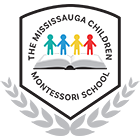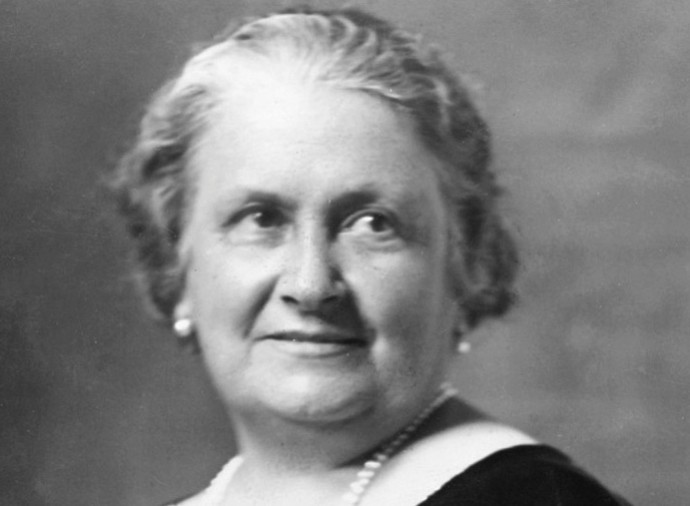-
The Montessori Philosophy
The basic premise of the Montessori philosophy of education is that all children display within themselves the person they will become. The Montessori classroom provides the environment and materials that the child needs for his/her personal development which allows them the freedom to choose their activities according to their own personal interests and readiness in a non-competitive environment.
Dr. Montessori believed that every person must educate himself: that a teacher is merely there to provide information and to guide a student through the learning environment. She felt, therefore, that the goal of early childhood education should be to nurture a child’s curiosity, a love for knowledge and a strong desire to learn.
-
“Free the child’s potential and you will transform him into the world”
-
A Unique Approach
The Montessori Philosophy is a unique method of education designed to take advantage of the sensitive period for learning between the ages of two and six years old. Children literally “absorb” the information they receive with no explanation and retain this ability until the age of seven. Dr. Montessori reasoned that a child’s development could be enriched by an environment where they could freely obtain materials which would demonstrate educational information. They will help the child work more efficiently, observe more carefully, and concentrate more effectively throughout their life.
The intellectual progress is naturally accompanied by emotional and spiritual experiences. The child becomes aware of and learns to love and care for themselves and the things around them. They learn cooperation and gain inner discipline and independence which leads to a high sense of self esteem. The Montessori Method offers individual attention to the whole development of the child and the foundation on which they can successfully build their future.
-
Why It's Successful
In order to learn there must be concentration. A child concentrates best by focusing attention on a specific, purposeful task he/she is performing with their hands. All of the Montessori Materials in the classroom entice the child to explore and learn with the use of their hands. For many, many years Montessori classrooms have demonstrated that a young child can learn to write and calculate in the same natural way that they learn to walk and talk.
The Montessori classroom approaches this goal in two ways. First, by allowing the child to express the excitement of learning by his/her own choice and at their own speed. Secondly, by helping them to perfect all of their natural tools for learning so that they will be at an advantage in future learning situations. The habits and skills which the child learns in the classroom are valuable for a lifetime. The Montessori classroom provides all of these long range purposes in addition to the immediate purpose of providing children with specific information (phonetic sounds, mathematics, fine and gross motor skills, etc.).
-
The 5 Areas Of Montessori
The exercises for practical life are designed to teach the child to function in their own environment by teaching them how to interact with the things around them. The practical life area prepares the child indirectly for all other areas of the curriculum with order, concentration, coordination and independence. Practical life exercises include pouring, sorting, food preparation, care of self (hand washing, buttons and zippers, grooming), care of the environment (tidying the classroom, tucking in chairs, dusting, polishing).
As the child progresses through the practical life activities, they become more involved. An elementary child learns advanced cooking skills or techniques. This is the easiest area of the classroom to bring to your home environment. Parents are encouraged to invite their child to sort the laundry. Show them how to load the washer and put in the appropriate amount of detergent. After the load of laundry is dry, your child can fold the laundry.
Sensorial exercises deal with developing the five senses. By developing the five senses, the child develops intelligence and independence. Dr. Montessori wrote, “The aim (of sensorial exercises) is an inner one,namely, that the child trains himself to observe; that he be led to make comparisons between objects, to form judgments, to reason and to decide; and it is in the indefinite repetition of this exercise of attention and of intelligence that a real development ensues.” The sensorial area also includes geometry as the subject is introduced to the child through their senses.
Children are taught the alphabet phonetically, using Sand Paper Letters to learn the formation of each letter. Printing is practiced daily for all age groups. As children learn the phonetic sounds, they can blend these sounds together to start reading simple three letter words (Pink Scheme), four and five letter words (Blue Scheme) and eventually learning to read all the different word families (Green Scheme). Children also learn parts of speech, sentence structure and journal writing. Children use the hands on Montessori Materials in the classroom to practice various concepts in the Language Area.
We begin with manipulatives, then slowly lead into abstract concepts. Mathematics is the science of numbers. Montessori mathematics focuses on numeration, the decimal system, and geometry. Our base ten system encourages the child to sequence and order his work. Beginning with numbers 1-10, 11-99, and 1-1000, the children learn linear counting and recognition of numerals, which then leads into addition, subtraction, multiplication and division concepts. This is accomplished through fun activities which involve lots of movement, manipulatives and group work. As the child matures, individual work is encouraged and abstract learning begins to take place.
Cultural subjects include history, geography, art, physical science, cosmology, music and physical movement. The aim of studying culture is to allow the child to experience their place in the universe. They begin by exploring similarities between their culture and others, and then have appreciation and respect for differences. They learn how all beings are fundamentally related and discover ways to feel they are significant beings in this world.
-
An Individualized Approach
The goal of early childhood education should be to nurture a child’s curiosity, a love for knowledge and a strong desire to learn.
Students are exposed to a wide variety of academic concepts where they will learn at their own pace and foster the necessary skills to be successful in both life and school. -
-
Maria Montessori (1870-1952)
Over a century ago, educator, writer, lecturer and medical doctor Maria Montessori developed a new approach for educating and nurturing young children.
Her philosophy worked from the basic premise that children learn better when they are given the opportunity to choose and discover in their own way. Today, over a century later, modern scientists are finding scientific data to support her discoveries.

